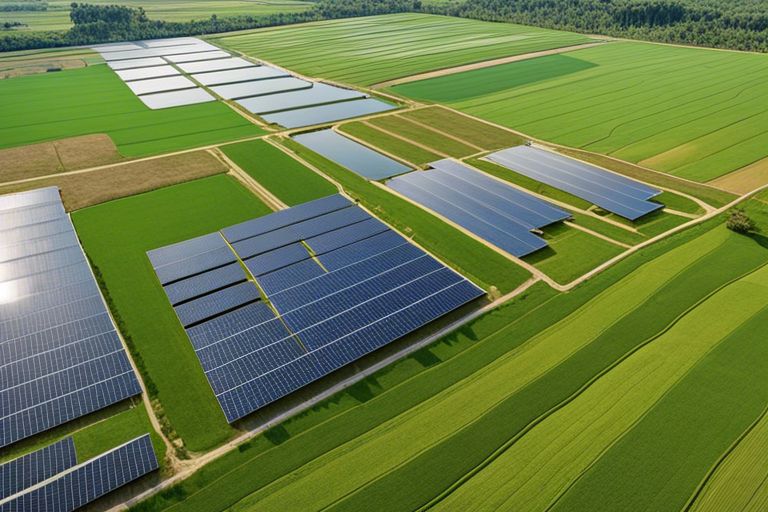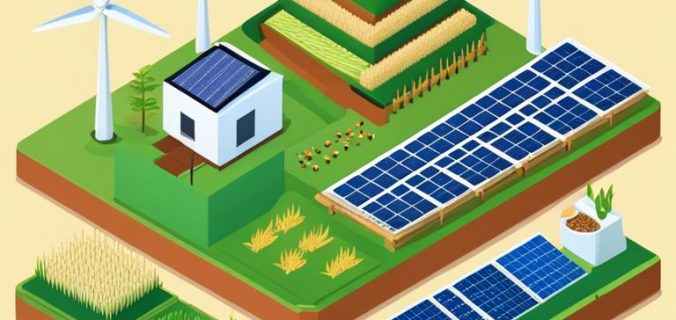Many are turning to rice as a sustainable and vegan-friendly source of starch. In a world where environmental concerns and health consciousness are on the rise, this humble grain is taking the center stage as a versatile and nourishing staple. Join us as we explore the benefits of incorporating rice into your diet, the various types of rice available, and sustainable practices to ensure a more eco-friendly approach to enjoying this primary food source.
Key Takeaways:
- Diverse Rice Varieties: Embracing different types of rice such as black, brown, red, and wild varieties can enrich the nutritional profile of your meals.
- Sustainable Farming Practices: Supporting sustainable rice cultivation methods like organic farming and water-saving techniques can significantly reduce environmental impact.
- Versatile Vegan Ingredient: Rice’s versatility as a vegan starch allows for endless creative recipes, making it a staple in plant-based diets worldwide.
The Problem with Conventional Rice
Environmental Impact of Rice Farming
Agricultural practices related to conventional rice farming often involve heavy water usage, leading to potential water scarcity in regions where rice is a staple crop. The use of chemical fertilizers and pesticides in rice cultivation can also contribute to water pollution and soil degradation, impacting local ecosystems and biodiversity.
Health Concerns Associated with Refined Rice
With the rise of refined rice consumption, there has been a growing concern about the loss of nutritional value in this processed grain. Refined rice lacks necessary nutrients such as fiber, vitamins, and minerals, which are vital for overall health and well-being. Regular consumption of refined rice has been linked to increased risk of diabetes and obesity due to its high glycemic index and lack of nutrients.
It is crucial to opt for whole grain varieties of rice, such as brown rice or wild rice, to ensure you are getting the full nutritional benefits of this staple food. Whole grains are rich in fiber, which helps in regulating blood sugar levels and supporting digestive health. Making the switch to whole grain rice can be a simple yet impactful step towards a healthier diet and sustainable food system.

Sustainable Rice Production Methods
Organic Farming Practices
It is crucial to implement organic farming practices in rice production to ensure sustainability. Organic farming avoids the use of synthetic chemicals and promotes soil health through natural means like composting and crop rotation.
Regenerative Agriculture Techniques
For sustainable rice production, regenerative agriculture techniques are crucial. This approach focuses on restoring soil health, increasing biodiversity, and enhancing the resilience of the ecosystem. By using cover crops, no-till farming, and rotational grazing, regenerative agriculture aims to sequester carbon and improve overall soil quality.
Rice production can benefit greatly from regenerative practices as they help reduce water usage, decrease reliance on chemical inputs, and promote long-term sustainability for rice farmers and the environment.
Vegan Starch Alternatives to Rice
Not only is rice a staple in many diets, but it also plays a significant role in global food security. If you want to explore sustainable alternatives to rice, there are several vegan starch options to consider. For a comprehensive look at the sustainability of rice farming, check out The sustainability of rice farming – Books.
Quinoa: The Protein-Rich Starch Option
Rice lovers looking for a protein-rich starch alternative may turn to quinoa. This ancient grain is not only packed with protein but also offers a complete amino acid profile, making it a valuable addition to a vegan diet.
Buckwheat: A Gluten-Free and Nutrient-Dense Choice
One of the gluten-free and nutrient-dense options to consider is buckwheat. This pseudo-grain is rich in nutrients like manganese, copper, and magnesium. It is also a great source of fiber, offering various health benefits.
The versatility of buckwheat allows it to be used in a variety of dishes, from breakfast porridges to savory pilafs. However, it’s important to note that even though it contains the word “wheat,” buckwheat is actually a gluten-free seed.
Final Words
From above, it is clear that the Rice Revolution offers sustainable steps towards embracing a vegan starch diet. By incorporating rice into our meals in creative and delicious ways, we can not only improve our health but also contribute to a more eco-friendly and sustainable food system. Let’s embrace this versatile ingredient and make a positive impact on our health and the environment.
FAQ
Q: What is the Rice Revolution about?
A: The Rice Revolution is a movement towards sustainable and environmentally friendly practices in the production and consumption of vegan starch, particularly rice. It aims to promote conscious choices that benefit both our health and the planet.
Q: How can I participate in the Rice Revolution?
A: You can participate in the Rice Revolution by opting for sustainably produced rice and other vegan starches, supporting local farmers who use eco-friendly practices, reducing food waste, and exploring creative plant-based recipes that highlight these ingredients.
Q: Why is the Rice Revolution important for our planet?
A: The Rice Revolution is crucial for our planet as it encourages practices that reduce carbon footprint, promote biodiversity, and support sustainable agriculture. By making informed choices about our food consumption, we can contribute to a healthier environment for current and future generations.

